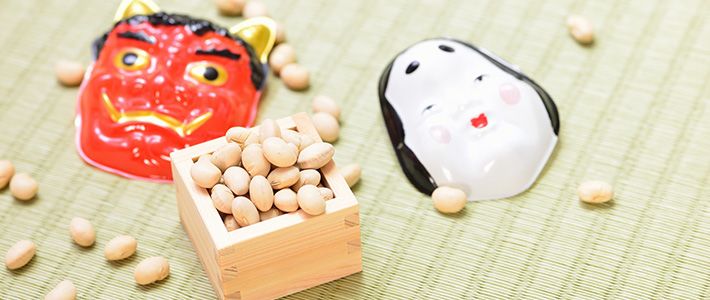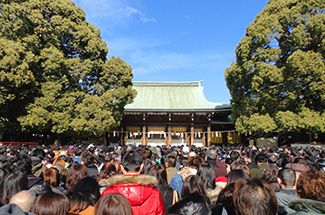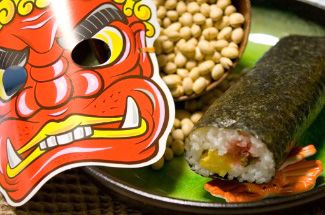
Setsubun
Society Culture- English
- 日本語
- 简体字
- 繁體字
- Français
- Español
- العربية
- Русский
An Auspicious Yearly Custom
The custom of Setsubun, while originating in China, has been observed in Japan since ancient times. The practice of dispelling vengeful ghosts and other specters ahead of the Lunar New Year first took root in Japan’s imperial court, where it slowly diffused throughout the rest of society. In modern times Setsubun is largely marked by throwing fukumame (roasted soybeans) to exorcise malevolent spirits such as oni (ogres) from homes, thus ensuring prosperity and health in the year ahead.
Mamemaki, or bean-throwing, which takes place on Setsubun on February 3, is thought to drive unseen beings conveying illness and misfortune from living spaces. It is standard to chant oni wa soto, fuku wa uchi, or “ogres out, good luck in,” when scattering beans, although there are many regional variations of the practice.
▼Further reading Customs, Festivals, and Observances: The Japanese Year The festivals and customs that mark each season. Customs, Festivals, and Observances: The Japanese Year The festivals and customs that mark each season. |
Many temples and shrines around the country hold mamemaki events, with some focusing only on inviting in good luck, while others are bold enough to welcome demons and ogres as messengers of the gods. Well-known locations include Shinshōji near Narita Airport in Chiba Prefecture as well as Ikegami Honmonji and Sensōji in Tokyo. Festivities often feature celebrities and famous athletes, drawing huge crowds of revelers.
Families commonly conduct mamemaki by having one member don an oni mask and play the role of the ogre. This is often the head of the household or person born under the year’s Chinese zodiac sign, with the latter called toshi-otoko for boys and toshi-onna for girls.
Lucky Beans
Standard fukumame, literally “lucky beans,” are soybeans, a staple crop traditionally thought to have medicinal properties. Customs vary widely, with some regions placing a wooden box of soybeans at family shrines as offerings to household deities prior to hurling them at the retreating ogres.
▼Further reading Ogres and Magic Beans: Japan’s Setsubun Tradition Ogres and Magic Beans: Japan’s Setsubun Tradition Another look at the fun and traditions of Setsubun. |
After exorcising all the malicious spirits, it is customary for family members to collect and eat one more fukumame than their age to ensure health through the remainder of the year. Many people have started to use unshelled peanuts in lieu of soybeans as they make cleanup easier and remain edible even after being tossed on the ground.
Bags of fukumame and paper oni masks begin appearing on supermarket and convenience store shelves in mid-January. Children in kindergarten and daycare commonly make masks as craft projects, which are then used for mamemaki at school as well as at home.
Along with bean tossing, many regions ward off oni by placing dried sardine heads stuck on sprigs of prickly hīragi at the entrance of homes, a combination that ogres and other supernatural creatures are thought to find unbearable.
Seasonal Sushi Rolls
A recent trend associated with Setsubun is a type of auspicious rolled sushi known as ehōmaki. Custom has celebrants eat an entire roll in one go on the eve of Setsubun while facing the ordinal direction deemed most favorable for the year. Furthermore, rolls are to be consumed in silence, with the eyes closed, and while pondering aspirations for the year ahead.
Originating in the Kansai area in western Japan, the act of devouring the hefty rolls in one sitting while pointed toward ehō, or lucky direction, is believed to preserve one’s connection with the auspicious energy of the gods. Convenience store chains started promoting the custom throughout the country in the late 1990s with campaigns offering special-order ehōmaki.
setsubun soybeans ogres ehomaki luck mamemaki fukumame rolled sushi February 3